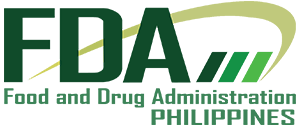In the interest of service, and in order to provide timely dissemination of the updates and amendments to the ASEAN Cosmetic Directive (ACD), the Center for Cosmetics and Household/Urban Hazardous Substances Regulation and Research (CCHUHSRR) hereby informs all cosmetic manufacturers, traders and distributors and other interested stakeholders, of the following information which have been adopted during the 38th ASEAN Cosmetic Committee (ACC) Meeting and Its Related Meetings:
| Date | Meeting |
| 15 & 21 November 2023 | 38th ASEAN Cosmetic Scientific Body (ACSB) Meeting |
| 16 & 21 November 2023 | 21st ASEAN Cosmetic Testing Laboratories Committee (ACTLC) Meeting |
| 20 November 2023 | ASEAN Cosmetic Committee Heads of Delegations (HODs) Meeting |
| 22-23 November 2023 | 38th ACC Meeting |
The following are the updates and amendments to the ACD. For reference, the new and modified entries as well as the given grace period are listed in Annex A.
1. Benzophenone-3 (Amendment to Annex VII – List of UV filters which cosmetic products may contain, Ref. No. 4) (EU 2022/1176: Amending Regulation [EC] No. 1223/2009 the use of Benzophenone-3 [BP3] in Cosmetic Products)
ACA presented the safety review of BP3 in cosmetic products. The inputs from AMS were shared to ACA to conduct the safety assessment of cosmetics containing BP3 in ASEAN market.
Based on the calculation of Margin of Safety (MoS) for the use of BP3 in all cosmetic categories, the MoS of each category is more than 100 which shows that the use of BP3 with a restricted limit is considered safe.
All AMS agreed to ACA’s proposal to adopt the restriction of BP3 and follow EU Annex VI with a 36 months grace period – Effective 15 November 2026, only compliant products shall be made available in the market and non-compliant products shall be withdrawn from the market.
2. Inclusion to Annex II – List of substances which must not form part of the composition of cosmetic products, Ref. Nos. 1681, 1682, 1683, 1684, 1685, 1686, 1687, 1688, 1689, 1690, 1691, 1692, 1693 and 1694 (EU 2022/1531: Amending Regulation [EC] No. 1223/2009 as regards the use in cosmetic products of certain substances classified as carcinogenic, mutagenic or toxic for reproduction and correcting that Regulation)
The ACSB Secretary presented the survey of the current usage of ASEAN for the 14 entries of the EU Annex II under this EU regulation. Based on the response from AMS (Brunei Darussalam, Malaysia, Myanmar, Philippines, Singapore, Thailand), 2 of the 14 entries has a reported use in cosmetic products in Malaysia and Thailand; For the Ref #1682, 6,6′-di-tert-butyl-2,2′-methylene-di-p-cresol (DBMC) (Repr. 1B), it has a reported use in one product from Malaysia and two products from Thailand and all related products from both countries are imported products. For Ref #1689, 4-methylpentan-2-one; methyl isobutyl ketone (MIBK) (Carc. 2), the ACSB Secretary reported its use in three products from Malaysia and two products from Thailand and all related products from both countries are imported products.
All AMS except the Philippines agreed to Malaysia and Thailand’s proposal and adopted to move the 2 entries into ACD Annex II with a grace period of 12 months – Effective 15 November 2024, only compliant products shall be made available in the market and non-compliant products shall be withdrawn from the market.
All AMS except the Philippines also agreed to the ACSB Secretary’s proposal to move the rest of 12 entries which do not have a reported use in ASEAN to ACD Annex II with a grace period of 12 months – Effective 15 November 2024, only compliant products shall be made available in the market and non-compliant products shall be withdrawn from the market.
The Philippines informed during the meeting that there are no existing notified cosmetic products containing the 14 entries in the country. The Philippines therefore, adopted to ban all 14 entries effective immediately with no grace period.
3. Inclusion to Annex VII – List of UV filters which cosmetic products may contain, Ref. Nos. 32 and 33 (EU 2022/2195: Amending Regulation [EC] No 1223/2009 on the use of HAA299 in cosmetic products)
ACSB Secretary presented the background of the Amending Regulation (EC) No. 1223/2009 on the use of specified ingredients in cosmetic products.
All AMS except Indonesia agreed to adopt HAA299 (Bis-[Diethylaminohydroxybenzoyl Benzoyl] Piperazine) of both non-nano form and nano form from EU Annex VI into ACD Annex VII with no grace period.
4. Diethyltoluamide (DEET) (Annex II – List of substances which must not form part of the composition of cosmetic products, Ref. No. A1144)
ACA presented a hazard data review on DEET. The risk assessment could not be provided by ACA since no cosmetic product containing DEET as an ingredient was found within the ASEAN region. DEET with a function of skin protection is currently recognized as an INCI ingredient in the EU CosIng.
N,N-diethyl-meta-toluamide (Diethyltoluamide, DEET) is widely used as an active ingredient for repellent products for pests such as mosquitoes and ticks. Product types with DEET as active ingredient includes liquids, lotions, sprays and impregnated materials such as towelettes and roll on. It is being used by directly applying to the human skin. Product using this active ingredient falls under a different classification (pesticides) within the ASEAN region and not as a cosmetic product.
Recalling the proposal from the 37th ACSB Meeting, Singapore, Indonesia, Philippines and Thailand agreed to ban DEET and include in ACD Annex II.
In the Meeting, all AMS except Malaysia agreed to include DEET in ACD Annex II with no grace period. Malaysia requested for more time to have an internal consultation within the country. Vietnam would adopt with a grace period of 24 months – Effective 15 November 2025, only compliant products shall be made available in the market and non-compliant products shall be withdrawn from the market.
5. ACD Annexes Review and Rectification
a. Amendment to Annex VI – List of preservatives allowed for use in cosmetic products
The AMS agreed with Singapore’s proposal to delete the phrase “formaldehyde or” from paragraph 5 of the Preamble to ACD Annex VI as formaldehyde is no longer a permitted preservative.
b. CI 45430 (Annex IV – Part 1- List of colouring agents allowed for use in cosmetic products)
During the 37th ACSB meeting, the ACSB Secretary provided the background of the adoption of CI 45430 in ACD Annex IV. CI 45430 was previously adopted from EU Cosmetic Directive, which was later replaced by the EU Cosmetics Regulation on 30 November 2009. The previously adopted contaminant condition currently shown on ACD Annex IV is not required by the existing EU Cosmetic Regulation.
All AMS and ACA agreed to the ACSB Secretary’s proposal to remove the contaminant criteria of “Not more than 1% 2-(6-hydroxy-3-oxo-3H-xanthen-9-yl) benzoic acid and 2% 2-(bromo-6-hydroxy-3-oxo-3H-xanthen-9-yl) benzoic acid” from CI 45430, ACD Annex IV. It was also agreed to retain other existing purity criteria of ACD Annex IV. For future entries, it was agreed to continue to follow the decision made in the 24th ACSB Meeting on the purity criteria to maintain status quo in ASEAN (non-adoption of the EU colorant purity criteria) and continue to evaluate finished product safety.
c. Amendment to Annex III – List of substances which cosmetic products must not contain except subject to restrictions and conditions laid down
i. Singapore proposed to consider Ref #12 of the EU Annex III whether the phrase of “with the exception of the following substances in Annex II: No. 1397, 1398, 1399” shall be added to ACD Annex III since in the 36th ACSB Meeting, Ref #1397, #1398, #1399 were already adopted and aligned to move to ACD Annex II. All AMS and ACA agreed with Singapore’s proposal.
ii. Indonesia presented the template for the proposal requesting ACSB to clarify regarding footnote (22), whether it is applied to all the restrictions or only for Column E (Other limitations and requirements) “For column (a): Not to be used in sunscreen products and products marketed for exposure to natural or artificial UV light”.
All AMS and ACA agreed with Indonesia’s proposal to remove the existing footnote (22) under column B and insert it under column E to “For (a): Not to be used in sunscreen products and products marketed for exposure to natural or artificial UV light”.
d. Amendment to Annex II – List of substances which must not form part of the composition of cosmetic products
ACSB Secretary presented the required updates on ACD Annex II. All AMS agreed to the proposed ACD Annex II rectification as follows:
i. Nickel bis(tetrafluoroborate) (CAS number: 14708-14-6), EU Annex II, Ref #1427 was not included in ACD Annex II. Nickel bis(tetrafluoroborate) (CAS number: 14708-14-6) has already been included in ACD Annex II, Ref #1401. It was erroneously introduced twice in EU Annex II (Ref #s 1401 and 1427). The second of those entries (#1427) is therefore redundant and should be removed. (EU 2021/850)
ii. Mercury-containing preservatives (Thiomersal and Phenylmercuric salts) were already removed from the Annex VI and the entry on ACD Annex II was revised to include the specific CAS numbers. The statement of “except those special cases included in Annex VI” should be removed from the current ACD Annex II: “Mercury and its compounds except those special cases included in Annex VI”.
iii. There is a typo error on the symbols in ACD Annex II Ref #1605, #1606, and #1607 which stated that “irrespective of the source, in the mixture as placed on the market is = 0.1 % w/w”. The symbol in this statement shall be corrected to align with the adoption of EU Regulation which stated that “irrespective of the source, in the mixture as placed on the market is ≥ 0.1 % w/w”.
iv. Quaternium-15 was banned and moved into ACD Annex II Ref #1386. This ingredient is currently still listed in ACD Annex VI (preservative) Ref #31 as Methenamine 3-chloroallylochloride. The inclusion of quaternium-15 in Annex II means this ingredient shall be removed from ACD Annex VI.
B. New ASEAN Cosmetic Method (ACM)
1. Determination of 1,4-Dioxane by Gas Chromatography Mass Spectrophotometry (GCMS)-HSS by Indonesia
ACTLC has finalized an ASEAN Cosmetic Method (ACM) on the Determination of 1,4-Dioxane in Cosmetic Products by Gas Chromatography Mass Spectrometry Head Space Sampler as ACM 011 and agreed to submit the document to the 38th ACC Meeting for endorsement.
The AMS noted the progress made by ACTLC and agreed to endorse Determination of 1,4-Dioxane in Cosmetic Products by Gas Chromatography Mass Spectrometry Head Space Sampler as a new ACM 011.
The new ACM is attached as Annex B and is accessible at the FDA website.
This announcement shall only serve as a prior notification to the cosmetic industry and shall be subsequently supplemented by an official FDA Circular. The aim of this document is to give the industry sufficient time / grace period to conduct operational activities (i.e. reformulation, testing of new formulations, phase out of products with old formulation, etc.) to ensure continued compliance with the ACD.
Should you have any inquiries and/or clarifications, you may contact us at [email protected].
For your information and guidance. Thank you very much.



